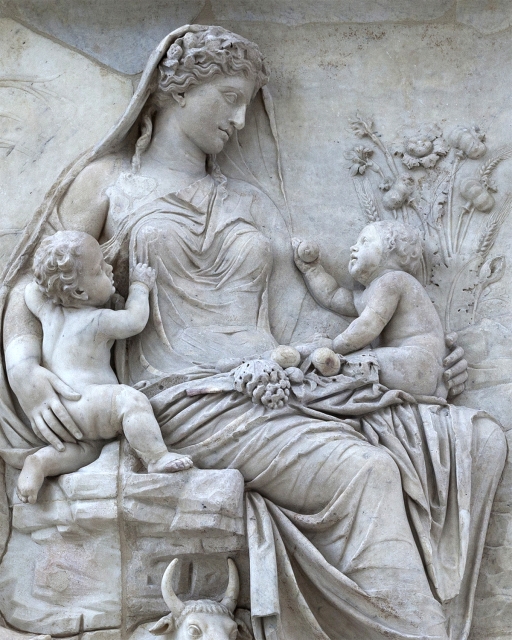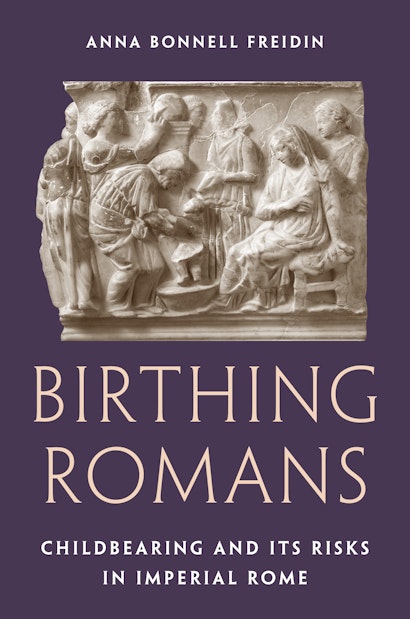From weather forecasts to astrology substacks, many people today structure their daily lives with the help of predictive information. Fundamentally, this was also true for ancient Romans. I don’t say this to minimize obvious historical discontinuities. For example, some of the predictive technologies we use, such as statistical modeling, engender ways of thinking that would have been profoundly unfamiliar to Romans. Some Roman tools, too, like their popular oracular handbooks, may seem foreign to modern observers. But I would argue these tools actually filled a similar role in structuring Romans’ perceptions of their futures by framing high stakes, risky life events through flexible, bounded possibilities.
While Romans’ approaches to risk and uncertainty have received treatment from ancient historians (especially through studies of subsistence and maritime risk), my book, Birthing Romans, is the first to consider these concepts through the process of childbirth. The majority of women in the Roman empire, as in countless premodern cultures globally, spent much of their adult lives in an inexorable cycle of pregnancy, birthing, childrearing, and mourning. These processes were both personal and political, shaped by forces from intimate habits to imperial pronatalism, as well as the give-and-take of humans’ relations with their gods. Indeed, thinking about risk through childbirth brings a new history of Roman culture into view, scaling from individual bodies and households to the empire, even to the gods’ role in chance and destiny.
A popular, Greek-language handbook, known as the Oracle of Astrampsychus, draws a number of these threads together. The oracle, which dates to (roughly) the second century CE, features ninety-two possible questions, the diversity of which suggests its users came from highly varied backgrounds. A sampling includes: “Will I become a senator?”; “Is my wife having a baby?”; “Will I be freed from slavery?”; “Will I get the woman I want?” After selecting a question from the list, the preface instructs a petitioner to choose a number between one and ten, which “the god gives to him [the petitioner] when he opens his mouth.” (Many of the oracle’s questions target men, although they could easily be adapted to suit anyone.) Then you must add this number to the question’s number, and the sum directs you to an answer. The ten possible answers to “Is my wife having a baby?” highlight profound anxiety about childbirth and early infancy:
- She’ll give birth with danger
- She’ll give birth to a beautiful baby and do well
- She’ll give birth and the baby will survive
- She’ll give birth to a boy with danger
- She’ll give birth with great danger
- You’ll father a baby, but the baby will be unprofitable
- She’ll have a baby girl who will quickly die
- She’ll have a baby girl with danger
- She’ll give birth and be in danger up to the point of death
- She’ll give birth and the baby will be unprofitable
Five of the answers highlight unspecified danger (kindunos in Greek), one clearly states the child will die, and two point to a vaguely problematic child (“unprofitable”); only nos. 2 and 3 are positive. This breakdown does not so much indicate something about the probability (in a modern sense) of difficult birth or infant death, but rather about the distribution of people’s fears.
How might an anxious, expectant father—let’s call him Titus—react to receiving, say, answer no. 8 (“She’ll have a baby girl with danger”)? Of course, the answer to this question depends on so many unique, unknowable factors about Titus and his wife, whom we’ll call Veturia. But it’s worth asking: would he tell her the answer he had received—or that he had even asked? Would he treat her differently, with the oracular response in mind? How might it change her plans for childbirth or those of her caregivers? The oracle’s answer is very specific about the child’s sex/gender and very vague about the dangers entailed. What should they prepare for? Will it be the baby or Veturia who is in danger—or both? Will they survive? The answer accommodates both a determinist worldview and one favoring the interplay of agency and chance.
This oracular response could have primed Veturia and her caregivers for a difficult outcome (including birth injuries or even neonatal death), in addition to shaping their preparations. Romans were confronted with an array of strategies to manage the risks of pregnancy and birth, and many probably mixed and matched such tools, which is a strategy in itself. If she had the resources, Veturia and those close to her might have drawn on herbal remedies, amulets, astrology, vows to the gods, regimen, and dietetics. There were many ways to condition pregnant bodies for birth and protect (or even enhance) offspring. Because the Roman empire eventually spanned the entire Mediterranean and beyond, vastly different practices and ecologies shaped the strategies to which people had access. But note: even in elite circles, no one tool or approach (such as what we’d call allopathic medicine) enjoyed a monopoly. Instead, different kinds of healers and prophylactic strategies competed and worked alongside one another in this enormously varied landscape.
In Birthing Romans, I argue that we should see tools such as amulets, vows, herbal remedies, and even the gods themselves, as part of a network that also included practitioners and other caregivers for a person giving birth. These human/non-human networks were shaped by—and sometimes subverted—social and gender hierarchies and the boundaries between elite and non-elite knowledge. Such communities of care were flexible and potentially diverse and may have included individuals with very different goals and priorities.
A wide community of care could also make it hard to know which strategies or caregiverswere ineffective, helpful, or harmful. If something went wrong—from uterine prolapse to neonatal death—was it an amulet misapplied or brought too late? Had the stars been inauspiciously aligned? Was a prenatal regimen or diet inadequate or improperly observed? Did a god refuse protection? Did the midwife make a mistake? With so many possible agents—and, thus, causes—responsibility could be widely diffused, potentially taking pressure off individual human actors. This is not to say that people didn’t blame each other for reproductive loss (they certainly did). Rather, I want to call attention to the ways people, households, and communities developed strategies to manage so much quotidian risk and loss. This was a world in which at least one in five children perished by their first birthday; and although maternal mortality was lower than most people imagine, many women lived their lives with debilitating birth injuries and trauma. Persistent reproductive loss was simply fact of life. By diffusing responsibility and blame, these networks could help households and communities preserve social cohesion. They supplied a framework to construct, process, and manage risks—and helped to keep women locked in this strenuous reproductive cycle.
In Birthing Romans, I push against the limits of our sources to imagine the lives of people like Veturia, whose circumstances and stories were entirely unique and specific, but who were also embedded in structures and communities that subjected them to pressures felt by many across the empire, in their own cultural idioms. Childbirth offers a kind of wormhole into Romans’ ideas about kinship and community, about futurity and agency, about humans’ entanglement with their environments and with their gods in an interconnected universe. The concept of risk emerges as a way to get at these interconnections, taking us from the Oracle of Astrampsychus to Veturia’s birthing chamber, from her community of care to the stars.
Anna Bonnell Freidin is assistant professor of history at the University of Michigan.

